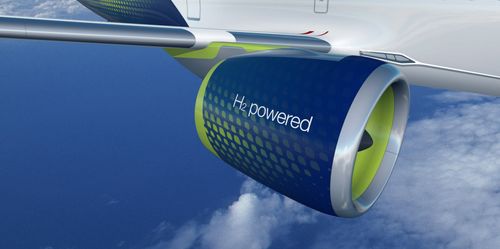HYCO1, a founder-owned CO2-to-X development company with proprietary CO2 utilization technology, is seeking partners to invest at both the platform and project level as it advances a series of commercial proposals.
Based in Houston and owned by its three founders, the firm is developing and commercializing technology that utilizes waste CO2 and methane to produce high purity hydrogen and carbon monoxide, which can then be used to make low-carbon syngas, fuels, chemicals, and solid carbon products.
The founders went “all in” on the technology and funded the first $10m for development themselves, and have since raised an additional $10m from two different ethanol producers that are planning to use the product, called HYCO1 CUBE, at their ethanol plants.
“We’re in the process of raising between $20m – $30m this year, with one or more strategics in investment sizes of $10m or more,” HYCO1 co-founder and CFO Jeffrey Brimhall said in an interview.
Beyond that, Brimhall says the firm plans to close on project financing for various projects in development, “which will spin development capital, license fees, and revenue back to HYCO1.”
HYCO1 is having direct conversations for the platform capital with the investment teams from potential strategic partners – like further ethanol producers, or specialty chemical producers and other operators of steam methane reformers.
Using the technology, the company hopes to qualify for tax credit incentives under 45V for the hydrogen produced utilizing recycled CO2 as a feedstock, as reflected in comments made last week to the IRS.
Projects in development
Meanwhile, HYCO1 is advancing a first three projects to maturity: a $175m green carbon syngas project on the US Gulf Coast; a $400m green methanol project on the Gulf Coast; and a $1.2bn green carbon synthetics project at an existing ethanol plant in Lyons, Kansas.
For the Kansas ethanol project, HYCO1 is having conversations with the “top five banks,” Brimhall said, about a project finance deal.
“We’re starting offtake discussions for both methanol and synthetics,” he said. “And as those offtake discussions firm up, we know for a fact that big intermediaries are going to want to come in and we’re likely going to work with those who have discretionary capital that they can invest on their own account and then pull in others with them.”
The company recently entered into a 20-year carbon dioxide supply agreement with Kansas Ethanol for the project. It will be co-located with Kansas Ethanol and utilize all 800 tons per day of CO2 emitted by the plant to produce approximately 60 million gallons per year of low-carbon and zero-carbon products.
HYCO1 is working to reach FID on the Kansas project by 1Q25, but its critical path depends on getting in the pipeline of an ISODEWAXING provider, such as Chevron or Johnson Matthey, said Kurt Dieker, another HYCO1 co-founder and its chief development officer.
“Assuming a conservative schedule, assuming they get engaged in the next 10 weeks, that would put us in 1Q of next year” for FID, said Dieker, who has deep experience in the ethanol industry, having worked for ICM, the technology behind 70% of the ethanol gallons produced in the US today.
The CUBE
HYCO1’s CUBE technology essentially works as a conversion catalyst applying heat to CO2 and methane to create hydrogen and carbon monoxide, the building blocks of virtually all petrochemical and carbon-based downstream products.
The company built a pilot facility in Houston two years ago, and has been characterizing the catalyst with 10,000 hours of uptime operation and data on how it works, Brimhall said.
As it was advancing the CUBE characterization process, the founders found they could shape the syngas ratio on the fly, moving it from 1-to-1 to above 3-to-1, he added.
“And because we’ve done the 1-to-1 all the way up to 3.5+-to-1, we also know we can produce pure CO by essentially taking the hydrogen off and using it as part of the endotherm that we need to make the reaction work,” he said. “So we could produce anywhere from pure CO to effectively pure hydrogen.”
That level of flexibility with a “single plant, single process, single catalyst” has never been done before, according to Brimhall, and it gives the company “immense capabilities to go into virtually any situation and solve for decarbonization and at the same time make high value products downstream.”
He added, “When we talk to people that really know the space and know industrial gases, they’re like, ‘Wait a minute, you can do that?’”
Methanol efficiencies
HYCO1 is currently in talks with six super major methanol producers about using the company’s technology for methanol supply, Brimhall said.
“Every one of them immediately went to diligence on our technology,” he said, noting that HYCO1 has promised to make natural gas-based methanol production more efficient, requiring only 27 MMBtu of natural gas per ton of methanol versus the typical 35 MMBtu of natural gas.
“The difference between 35 MMBtu and 27 or 25 is a massive change in a commodity market,” Brimand said, “and whoever owns that technology is going to have a competitive advantage.
The methanol majors are evaluating how to use the technology to their benefit, which, according to Brimhall, might require them to make an investment in HYCO1 along with the first plant.
“We’ve spent the last three or four months driving the technical diligence part with a team of 15 engineer PhDs to basically come back and say to them, ‘Here’s the proof, here’s the number.’”
HYCO1 plans to offer it concurrently to all of the methanol producers in order to extract the best terms on the first projects, he said.
Project developer or licensor?
HYCO1’s business model comes down to whether they are a project developer or a licensor of technology. According to Brimhall, they are a project developer first and a technology licensor second.
“We have to be project development oriented in our minds across multiple verticals in order to get traction and proof, viability, efficacy,” he said. “So we’re acting in a kind of a super-project developer mode to ultimately get the attention of big offtakers, strategic partners, and potential licensors downstream.”
However, a large licensor will not likely step in to provide a multi-project license until they see the product working at scale given the breakthrough nature of the technology, Brimhall said, and the economics that flow from it.
Take syngas for example, a market dominated by a few large players like Air Liquide, Air Products, and Linde. HYCO1 wants to position its first project in that sector and then start having licensing discussions with those big firms, or additional engineering firms like Technip, Fleur, or Bechtel.
The large firms could provide an initial “bolus” of capital to HYCO1 for having developed the technology “and getting a license that means something, whether it’s geographic or it’s exclusive worldwide or it’s bi-vertical,” Brimhall said.
“There’s an initial payment that commensurates with what the market opportunity is. And then there’s a minimum they’re going to have to step up to in order to keep us satisfied that they’re really a licensor that is going to ultimately realize value to the Topco or HYCO1 as a TechCo.”
“So it’s really project development first, licensing second kind of business model,” he added. “And it’s on multiple verticals. That’s what happens when you have, you know, potent technology.”







